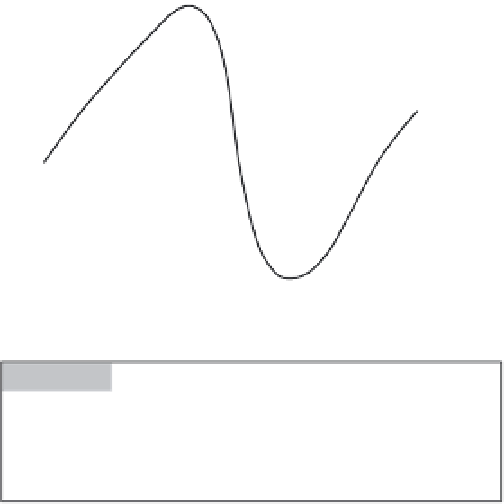Environmental Engineering Reference
In-Depth Information
well than through the sediments overlying
the aquifer. These fluctuations are observa-
tional effects rather than effects on the aqui-
fer itself. A time lag exists over which the
pressure change at land surface is propagated
through the unsaturated zone to the water
table. Therefore, an imbalance exists between
the pressure on the water in the well and the
water in the aquifer until the pressure front
arrives at the water table. This imbalance pro-
duces a change in the observed water level in
the well. The length of the time lag increases
with increasing depth to the water table and
with decreasing vertical air diffusivity of the
unsaturated-zone sediments. Techniques for
identifying and removing the effects of atmos-
pheric-pressure changes from observed water
levels are described in Weeks (
1979
), Rojstaczer
(
1988
), and Rasmussen and Crawford (
1997
).
Pressure transducers, which are commonly
used to measure water levels, can also be
affected by changes in atmospheric pressure
(Rasmussen and Crawford,
1997
).
24
h
Water table level
Slope
h
s
6:00 a.m.
6:00 p.m.
Midnight
Noon
Midnight
Figure 6.3
Diagram of water-level fluctuations, showing
variables needed for the White (
1932
) method for
estimating evapotranspiration (
s
is change in water level
over 24 hours,
h'
is hourly rate of water table rise between
midnight and 4:00 a.m.) (after Troxell,
1936
).
Entrapped air
Water levels in unconfined aquifers also can be
affected by the presence of entrapped air between
the water table and a wetting front advancing
downward from land surface. This phenom-
enon is particularly difficult to identify because
it occurs in response to precipitation and, thus,
is easily mistaken for recharge. The phenomenon
takes place when surface soils become saturated,
and therefore impermeable to air, and is most
prevalent in fine-textured soils.
Figure 6.4
illus-
trates the phenomenon, which has been termed
the
Lisse
effect (Krul and Liefrinck,
1946
) after
the village in Holland where it was first identi-
fied. The entrapped air restricts infiltration at
land surface; therefore, it not only gives the false
impression of recharge, but it also reduces the
amount of recharge that would be expected in its
absence. Meyboom (
1967
) attributed the immedi-
ate increased runoff in the Qu'Appelle River after
a light rainfall to the Lisse effect. In most field set-
tings the effect is probably not important because
irregularities in land surface and the presence of
macropores in soils tend to inhibit widespread air
entrapment (Weeks,
2002
).
groundwater discharged during one day,
V
ET
,
was then calculated as:
V
=
S hs
y
(24
'
+
)
(6.3)
ET
where
s
is the water-level elevation at mid-
night at the beginning of the 24 hour period
minus the water-level elevation at the end
of the period. Using a specific yield of 0.073,
White (
1932
) estimated seasonal
ET
gw
of the
alfalfa to be 700 mm. Loheide
et al
. (
2005
)
analyzed White's method using a ground-
water flow model and found that the greatest
source of uncertainty with the method was in
estimating
S
y.
Atmospheric pressure
Changes in atmospheric pressure can cause
fluctuations of tens of millimeters in water
levels measured in observation wells. The fluc-
tuations occur because pressure changes are
transmitted more rapidly through the open












